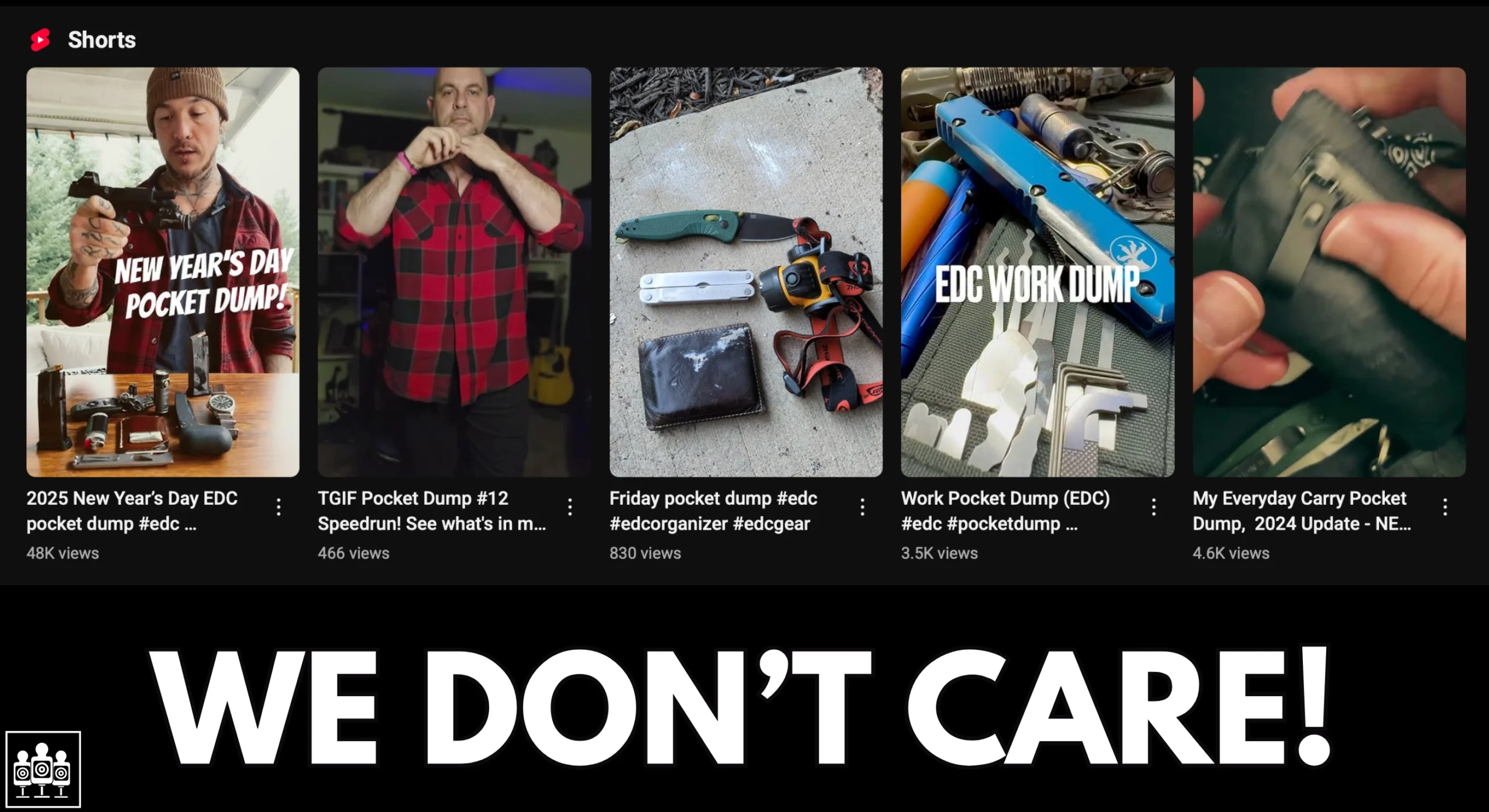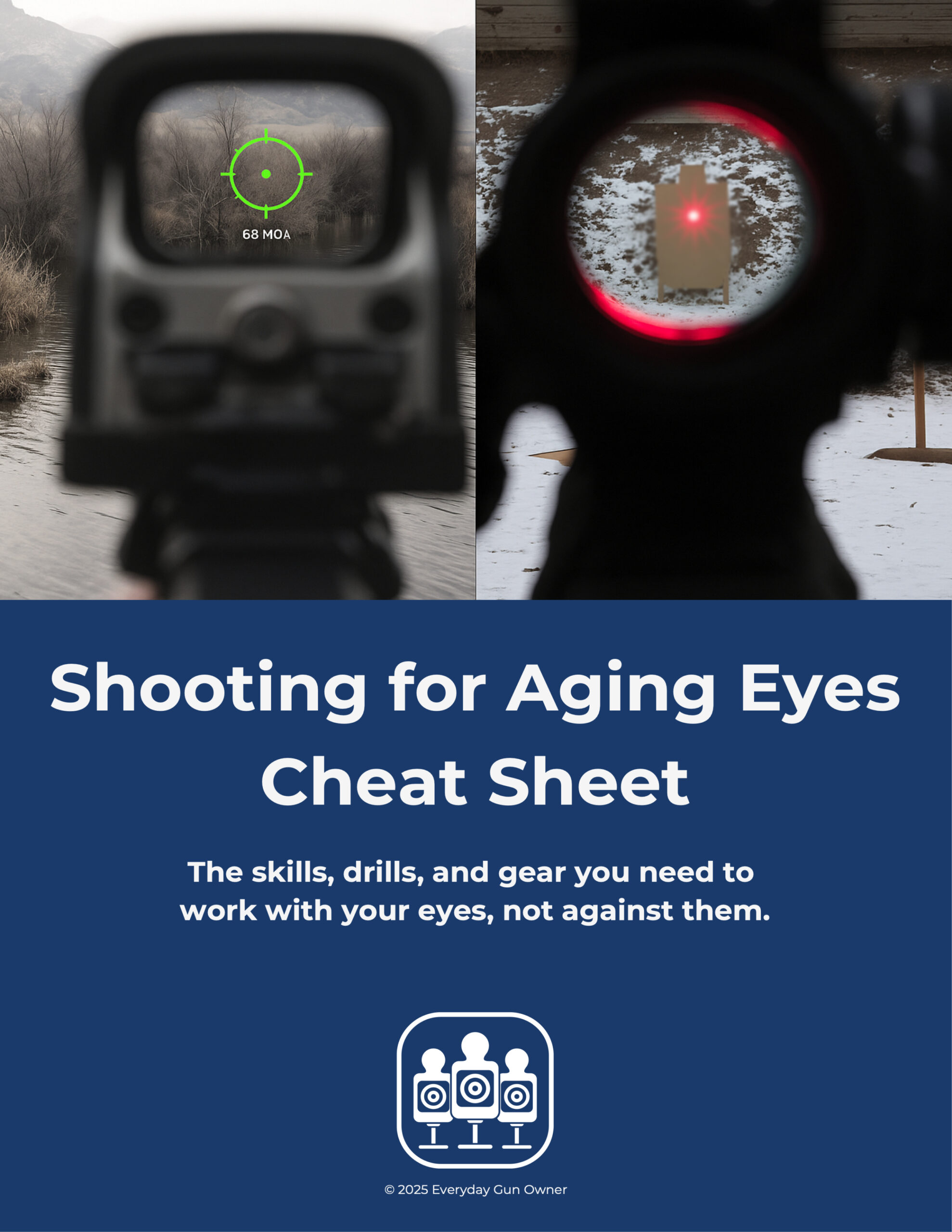Your Pockets Are a Lie
Go ahead, empty your pockets. What’s in there? A wad of faded receipts, a lint-covered mint, three keys to doors you haven’t opened in a year, and that fancy titanium doohickey you bought after watching a video online. You know, the one you’ve never actually used. Most of what passes for “Everyday Carry,” or EDC, is a sad collection of aspirational junk. It’s a panoply of pocket-fillers that looks cool in a carefully arranged photo but fails miserably in the face of a genuine problem. It’s time to stop lying to yourself.

Ditching the “Gear Dump” Mentality
The internet is choking on “gear dumps.” You’ve seen them. Perfectly curated layouts of expensive knives, flashlights, and pry bars on rustic wooden backgrounds. This isn’t preparedness, it’s a beauty pageant for gear hoarders. The problem with this approach is that it completely misses the point. It focuses on the what before the why. A ten-thousand-dollar custom knife is useless if it’s the wrong tool for the job or if you don’t have it when you need it. This obsession with collecting individual items creates a disjointed mess, not a functional system.
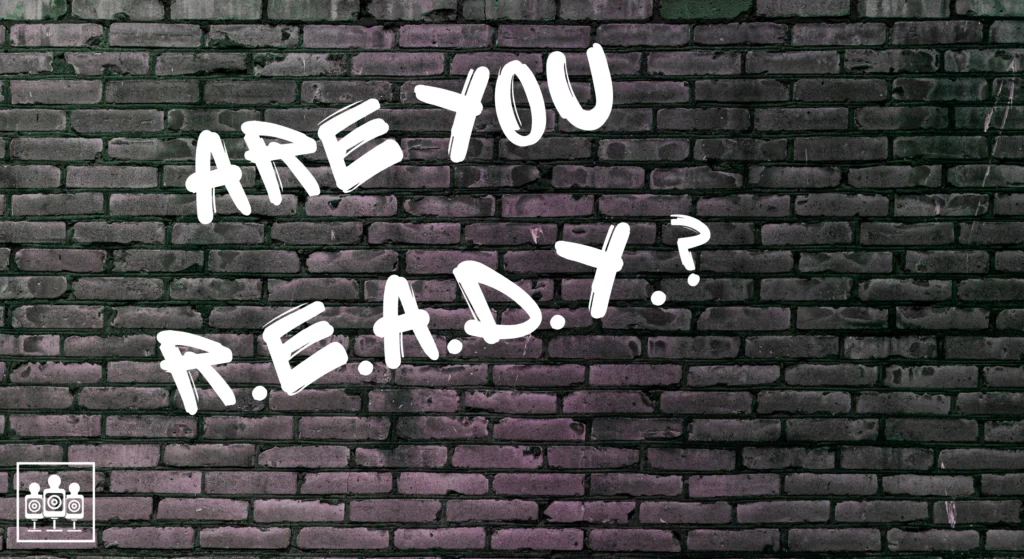
Introducing the Urban R.E.A.D.Y. System: A Philosophy, Not a Shopping List
This isn’t another list of crap to buy. This is a framework for thinking. The Urban R.E.A.D.Y. system is about building a cohesive, practical, and personal set of tools that makes you more capable. It’s a philosophy that forces you to justify every single item that earns a spot in your pockets. R.E.A.D.Y. stands for Role First, Equip the Immediate Layer, Adaptive Loadouts, Design Habits Not Hype, and You Lead the Way. Let’s break it down.
R — Role First

Before you buy a single piece of gear, you need to answer one dead-simple question: “What role am I playing today, and what do I need to be ready for?” This is the absolute bedrock of a smart EDC. Your gear must reflect your real life, not your zombie-apocalypse fantasy.
Are you a dad taking the kids to the park? Your primary “risks” are scraped knees, splinters, and broken toys. A solid first-aid kit and a reliable multi-tool are your mission-critical gear. Are you a commuter navigating a crowded urban jungle? Your challenges might be a dead phone, a dark subway tunnel, or needing to walk five miles home. A power bank and a high-quality flashlight suddenly become more important than a fire starter.
Know who you are and what you’re protecting. Your role as a parent, professional, caregiver, or commuter dictates your loadout. Be brutally honest with yourself. Carrying a Rambo knife to your cubicle doesn’t make you prepared, it makes you a liability. Define your role, define your risks, and then—and only then—can you start choosing the tools.
E — Equip the Immediate Layer
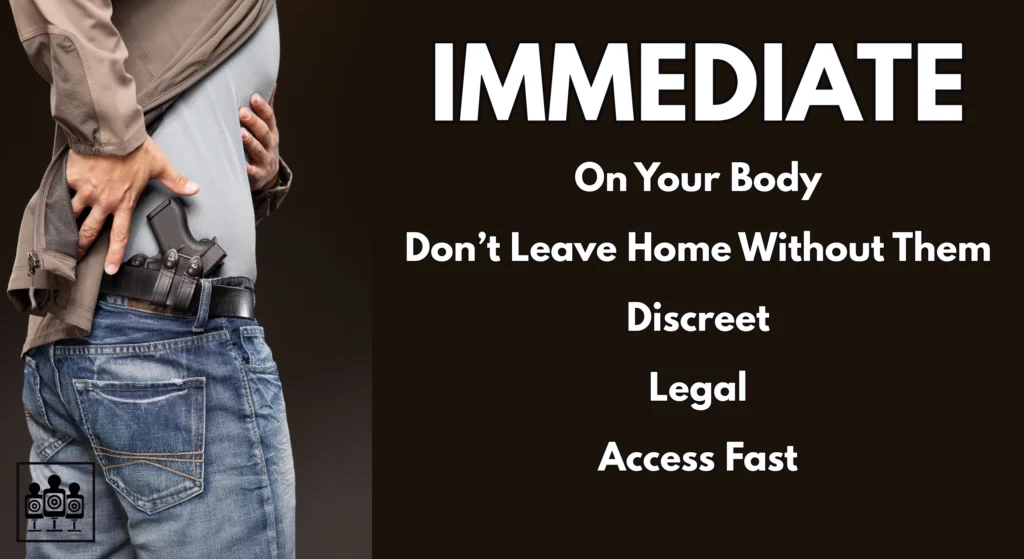
This is your Layer 1, your on-body, can’t-leave-home-without-it kit. These are the tools that solve immediate, high-frequency problems. We’re talking about your phone, wallet, and keys, of course. But this layer also includes a reliable cutting tool, a dedicated flashlight, and a pen. It might also include a medical item like a tourniquet or a defensive tool, depending entirely on your role, training, and local laws.
The key to this layer is access and speed. These tools must be discreet, legal, and placed where getting to them is second nature. A knife clipped to your pocket, a flashlight in a pocket organizer, a slim wallet that doesn’t feel like a brick. This isn’t a random collection, it’s a carefully considered set of solutions.
And here’s the thing: you might not carry every single item every single day. Maybe the defensive tool only gets carried after dark. But you’ve trained with all of it. You know how it feels, how it draws, and how it fits into the system of your life. This layer is your immediate response capability.
A — Adaptive Loadouts
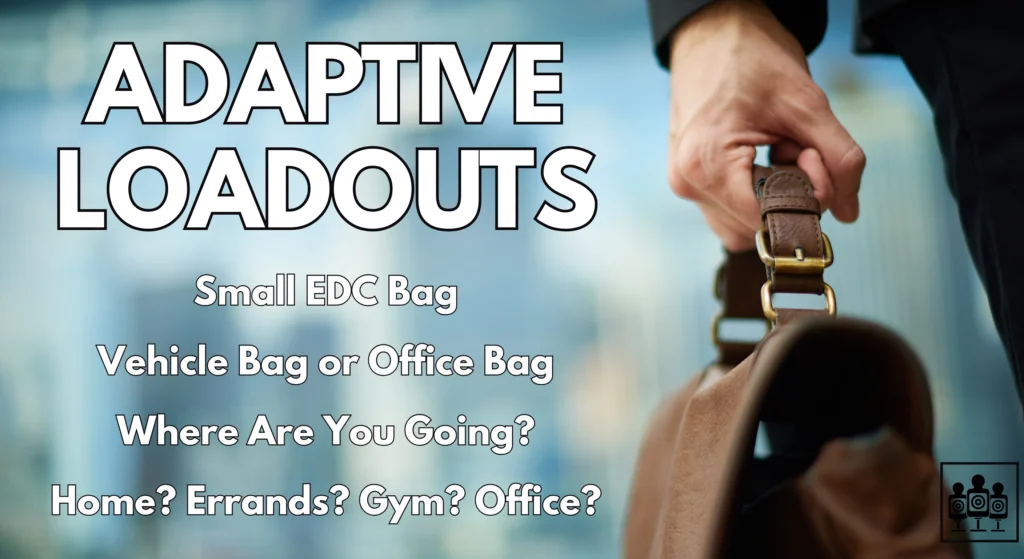
You can’t carry everything on your person, and you shouldn’t try. That’s where Layers 2 and 3 come in. These are the adaptive loadouts that extend your capability based on context. Your immediate layer stays consistent, but these outer layers scale up or down.
Layer 2 is typically a small bag, like a sling, backpack, or briefcase. Going to the office? The bag might contain a laptop, a more comprehensive first-aid kit, a water bottle, and snacks. Heading to the gym? The loadout changes. That’s the point. It’s flexible.
Layer 3 is your vehicle kit or your desk drawer at work. This is where you can stage more robust gear: a full trauma kit, a proper toolbox, emergency water, a change of clothes, and warm layers. You don’t need to haul it around, but it’s pre-staged in a logical place where you spend a lot of time.
Think about your day in terms of environments: home, car, office, gym. A grocery run has different risks than a cross-country road trip. Your adaptive loadouts should reflect that reality. Carry smart, not heavy.
D — Design Habits, Not Hype
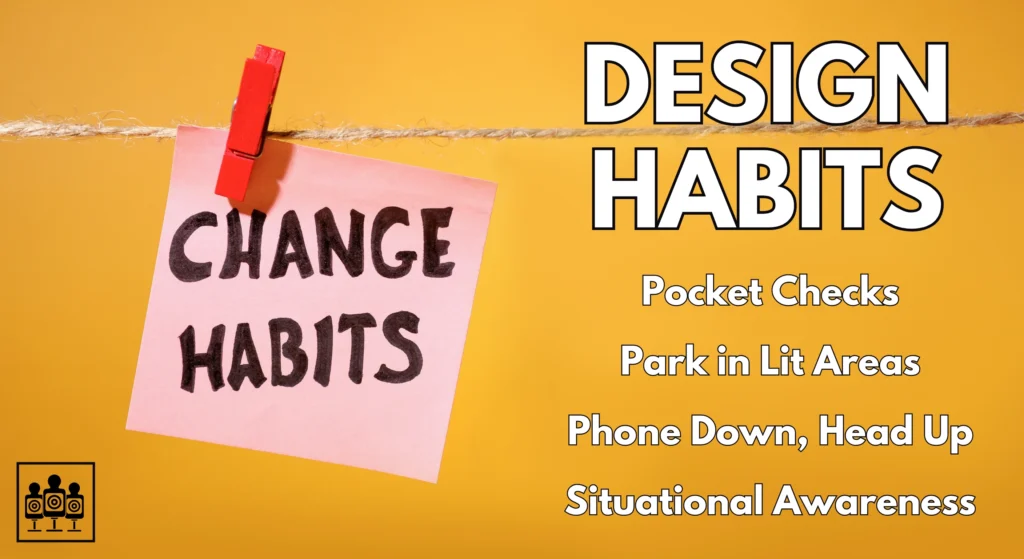
Here’s a hard truth: all the expensive gear in the world is useless if it’s sitting in your drawer when you need it. Consistency beats a big budget every time. This part of the system is about building the habits that make you truly prepared, and it costs nothing but discipline.
It starts with a simple pocket check before you walk out the door. Phone, wallet, keys, knife, light. Every single time. It becomes an unconscious routine. It continues with tool maintenance. Is your knife sharp? Are your flashlight batteries fresh? Is your medical gear expired? Gear fails. Responsible men check their gear.
But the most important habit is observation. Situational awareness. Paying attention to your surroundings instead of staring at your phone. It means practicing mental reps, asking yourself “what if” as you go about your day. Where are the exits? Who seems out of place? This is the software that runs the hardware in your pockets. The right tool won’t save you if you forget to carry it, and it damn sure won’t save you if you never see the problem coming.
Y — You Lead the Way
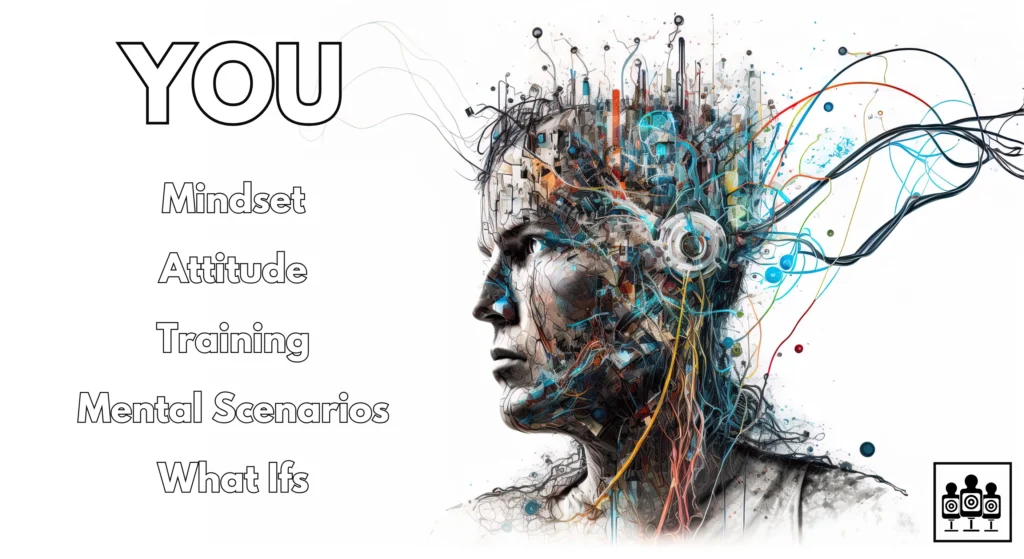
This is the final and most critical piece of the puzzle. The gear doesn’t make you ready. The habits help, but they aren’t the whole story. Your mindset drives everything. When things go sideways—whether it’s a car accident, a medical emergency, or a power outage—people will look for someone who is calm and in control. That person is you.
Being prepared isn’t about looking for trouble. It’s about being the steady hand that solves it. It’s the quiet competence to handle a problem without panic. It’s the protector mindset. Your family, your coworkers, and even strangers in your community will feed off your energy. If you are calm, they are more likely to be calm. If you are decisive, they will have direction.
This is the ultimate goal of the Urban R.E.A.D.Y. system. It’s not about collecting tools. It’s about forging yourself into a human tool, an asset to yourself and those you care about. Own your decisions, lead by example, and be the man who is ready for that responsibility.
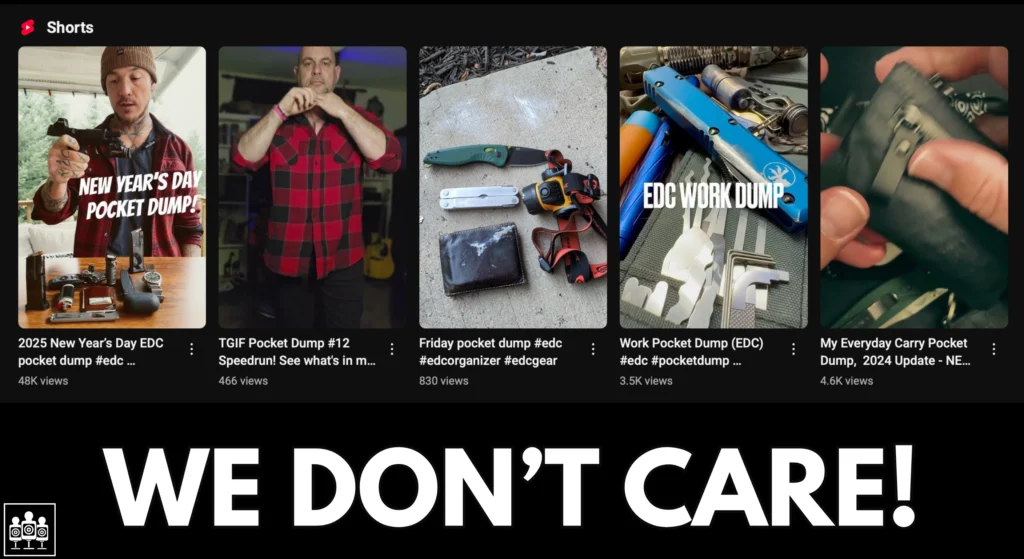
Conclusion: It’s a Mindset, Not a Pile of Gear
Think, Don’t Just Collect
If you’ve made it this far, you get it. This isn’t about the gear. It’s about what the gear enables you to do. It’s about cultivating a mindset of self-reliance and quiet competence. It’s about looking at the world, identifying potential problems, and having simple, elegant solutions for them already in your pocket. An expensive tool you don’t understand is just a paperweight.
Be Capable, Not Just Equipped
Stop watching gear reviews and start practicing skills. Learn a few basic knots. Take a first aid course. Go to a shooting range. A man with a cheap knife who knows how to use it is infinitely more capable than a man with a thousand-dollar blade who just keeps it in a display case. So stop buying crap. Start building capability. That’s the whole point.
Want to Go Deeper?
This article just scratches the surface. If you’re serious about mastering this mindset, keep an eye out for our upcoming book, “Urban Ready,” dropping in Fall 2025. It’s the definitive deep dive into the R.E.A.D.Y. system and what it truly means to be the protector your family needs.
Ready to Build a Smarter Carry?
We’ve laid out the framework. If you’re done guessing and want to see how these principles apply to our specific gear categories, we’ve broken it all down. No more endless scrolling through gear dumps, just a straightforward guide to get you started on the right foot.
Dive into our Everyday Carry Categories and Quick Start guide to begin building a capable and intelligent EDC system today.

